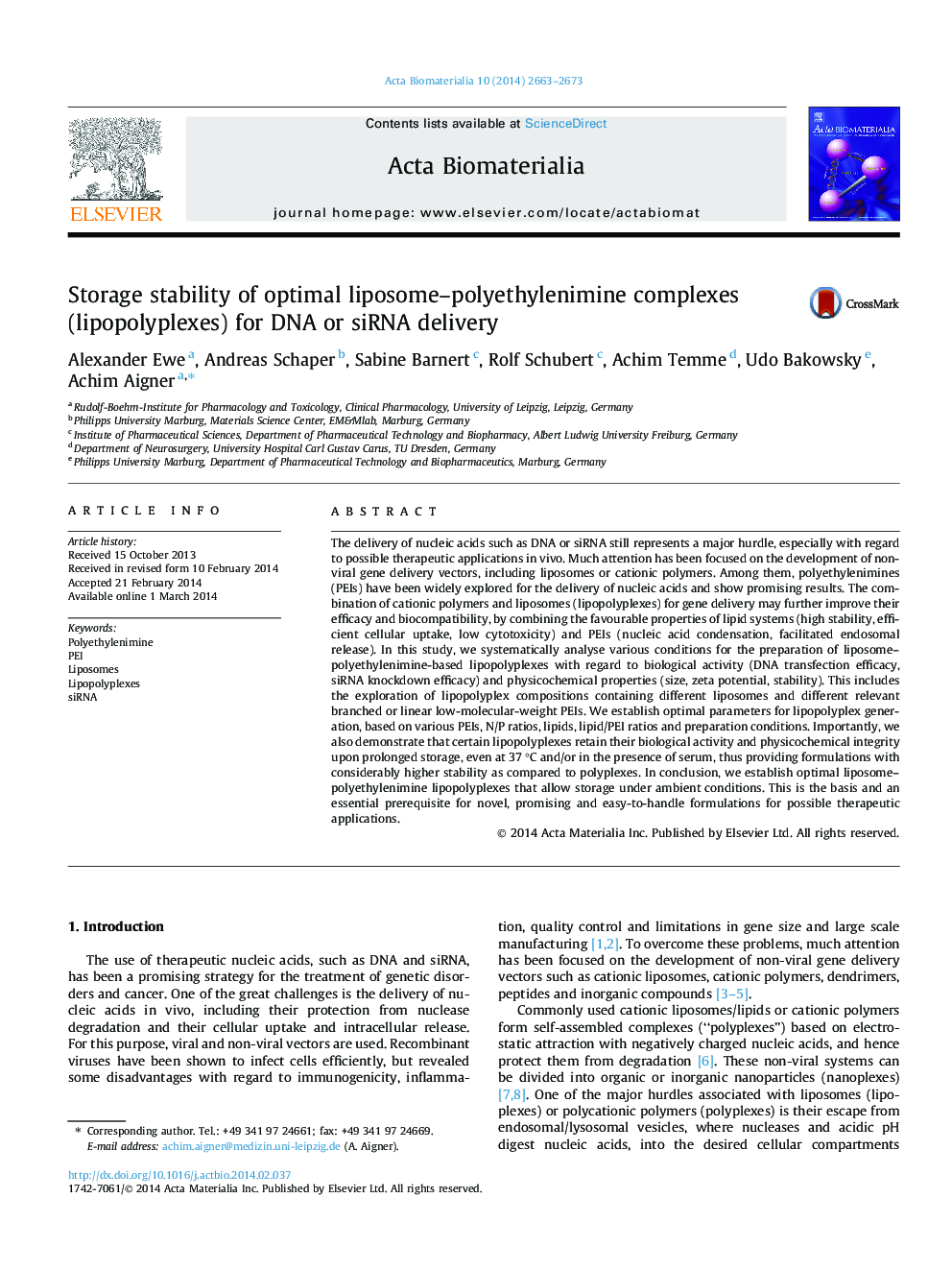| Article ID | Journal | Published Year | Pages | File Type |
|---|---|---|---|---|
| 10159104 | Acta Biomaterialia | 2014 | 11 Pages |
Abstract
The delivery of nucleic acids such as DNA or siRNA still represents a major hurdle, especially with regard to possible therapeutic applications in vivo. Much attention has been focused on the development of non-viral gene delivery vectors, including liposomes or cationic polymers. Among them, polyethylenimines (PEIs) have been widely explored for the delivery of nucleic acids and show promising results. The combination of cationic polymers and liposomes (lipopolyplexes) for gene delivery may further improve their efficacy and biocompatibility, by combining the favourable properties of lipid systems (high stability, efficient cellular uptake, low cytotoxicity) and PEIs (nucleic acid condensation, facilitated endosomal release). In this study, we systematically analyse various conditions for the preparation of liposome-polyethylenimine-based lipopolyplexes with regard to biological activity (DNA transfection efficacy, siRNA knockdown efficacy) and physicochemical properties (size, zeta potential, stability). This includes the exploration of lipopolyplex compositions containing different liposomes and different relevant branched or linear low-molecular-weight PEIs. We establish optimal parameters for lipopolyplex generation, based on various PEIs, N/P ratios, lipids, lipid/PEI ratios and preparation conditions. Importantly, we also demonstrate that certain lipopolyplexes retain their biological activity and physicochemical integrity upon prolonged storage, even at 37 °C and/or in the presence of serum, thus providing formulations with considerably higher stability as compared to polyplexes. In conclusion, we establish optimal liposome-polyethylenimine lipopolyplexes that allow storage under ambient conditions. This is the basis and an essential prerequisite for novel, promising and easy-to-handle formulations for possible therapeutic applications.
Related Topics
Physical Sciences and Engineering
Chemical Engineering
Bioengineering
Authors
Alexander Ewe, Andreas Schaper, Sabine Barnert, Rolf Schubert, Achim Temme, Udo Bakowsky, Achim Aigner,
